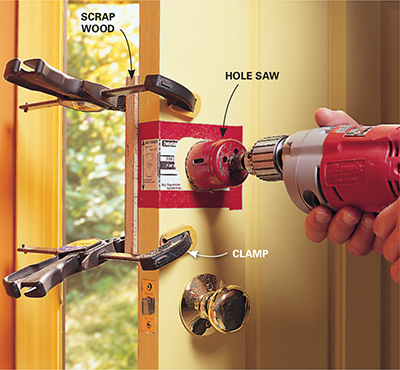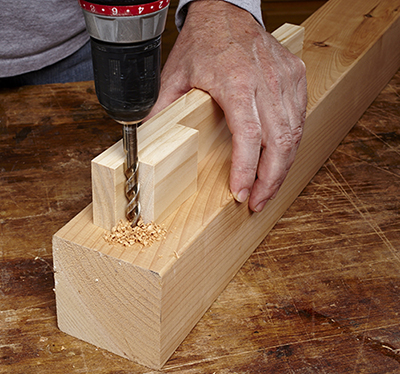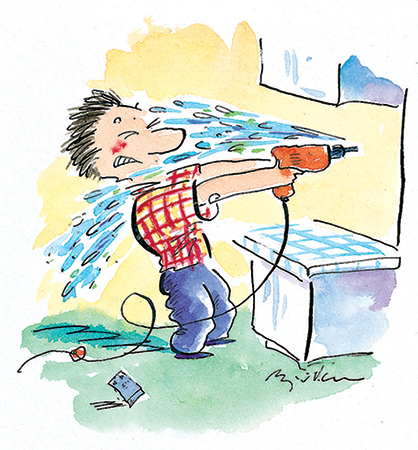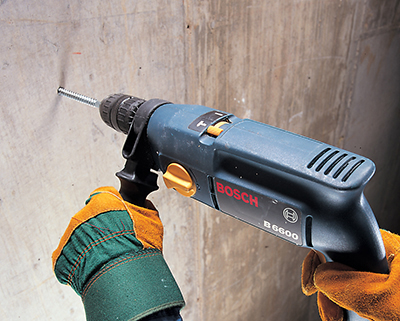No. 57
Master your drill
Bore perfect holes—in anything!

Prevent breakout
Any type of drill bit will bust out slivers as it breaks through the other side of the wood. Usually, that’s not a problem. But when you need a neat exit hole, clamp on a scrap to prevent breakout. If you’re using a hole saw or spade bit, here’s another approach: Bore through until the point of the bit emerges on the other side. Then drill from the other side.

Straight in
When you need a hole that’s perfectly perpendicular to the surface, tack two scraps of wood together and use the inside corner as a guide.
The right bit for the job

Twist bit
The standard choice for most holes up to 1/2 in. It bores through wood, drywall and metal.

Modified twist bit
It’s like the old standard, but with a reengineered tip for faster drilling, easier starting and cleaner holes.

Brad-point bit
The pointed tip lets you position a hole with perfect precision, and the sharp outer edges eliminate splintering as the bit enters the wood.

Masonry bit
The carbide tip grinds into concrete, mortar, brick, stucco or stone.

Tile bit
It bores into ceramic tile and even glass. Some versions work with porcelain tile; others don’t.

Spade bit
This is the most economical bit for drilling large holes (up to 2 in.) in wood or drywall. Some models have a screw tip for faster drilling.

Auger bit
The screw tip pulls the bit into wood, for fast drilling of large holes. These bits are worth the higher cost only if you’re drilling hundreds of holes.

Hole saw
For really big holes (2 in. or more) in wood, drywall or thin metal, this is the most economical choice.
Voice of experience

Think before you drill
I was in a big hurry to finally hang that shelf above the vanity. With a little luck, I’d be done before kickoff. As I bored through the drywall, I hit something hard. No problem. A hard push broke through the obstruction—which turned out to be a pipe. Never did get to watch the game that day. Every contractor I know has a story with the same moral: When drilling, remember that there may be a surprise on the other side. And if you hit something that doesn’t feel right, stop.
Brent Berger, carpenter and The Family Handyman Field Editor

Hammer into masonry
A standard drill equipped with a masonry bit is fine if you just need to punch a hole or two in soft brick or stucco. But for lots of holes or harder materials like concrete, you’ll want a hammer drill. A hammer drill pounds the bit forward as it turns for much faster drilling. Hammer drills come in several sizes. Bigger is faster—and more expensive. But you can pick up a powerful drill at a reasonable price at any rental center.











